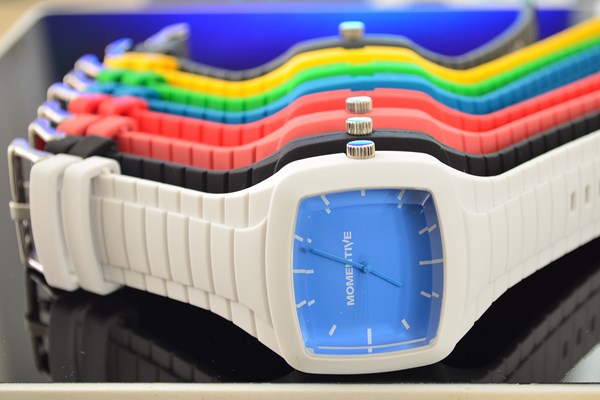What Customers Actually 'Need' When They 'Want' Certain Material Properties
Despite the fact that material specification in a part drawing will literally make or break a component, this key attribute is often treated like an afterthought, if addressed at all.
Over the years, Oliver Franssen, global marketing director of silicone supplier Momentive Performance Materials GmbH, Leverkusen, Germany, has curated a collection of part drawings that highlight the general apathy around choosing a resin for a part. In many cases, materials aren’t an afterthought, they’re a ‘neverthought.’
“Materials are often not specified,” Franssen said, “despite the fact that the elastomer parts can be critical to the function of the entire system.” Speaking at the Molding 2015 Conference (June 16-18; Chicago), Franssen noted that even when materials are specified, the right questions about their properties are not always asked.
“Functional relevant points frequently are not specified,” Franssen explained, noting a lack of guidance for key parameters including: hardness/modulus, tensile strength, elongation at break, tear strength, working environment and compression set.
Such generic requests for a “plastic” fail to acknowledge the breadth and depth of the elastomer catalog. “The silicone world covers a very broad temperature and polarity range,” Franssen said, with different metrics for those materials’ properties depending on the standard used (ASTM, ISO, etc.). “It is difficult to compare materials for use in an application without knowing the details—stuff like compression set, tear resistance, vulcanization, viscosity—it’s hard to do that using data sheets.”
Needs vs. Wants
Among Franssen’s slides was one translating customers’ property requests of what they say they want to what they’ll actually need.
- Asks for hardness/Needs modulus
- Asks for oil content in percent/Needs lubrication, weight loss of oil
- Asks for FDA approved/Needs FDA compliant
- Asks for cohesive structural bonding/Needs adhesion
- Asks for approval by OEM/Needs qualification at tier supplier
- Asks for a low-cost material/Needs a low system cost
- Asks for samples/Needs datasheets
The answer from Franssen’s view at a material supplier:
“There is no ‘best material available on the planet,’” Franssen said. “You have to look at every particular case and find the right material. We have to help the customer get through this jungle. As far as the path forward, instead of just longer specifications, put a clear description on the drawing; put in post curing, molding process, color.”
Other steps on the path:
- Talk to internal experts
- Share expectations
- Look for reference applications
- Don't rely solely on brochures and databases
- Develop or use existing meaningful tests
“Your customer may not be interested in a new material,” Franssen said, in which case you should consider simulation to prove out a potential resin switch. “Test real parts in real applications,” Franssen said. “Know the exact raw material and curing process.”

Related Content
-
Tracing the History of Polymeric Materials -- Part 29: Polyurethane
This material family has unparalleled versatility, not only in terms of the forms the material can take, but in the different ways in which it can be processed.
-
Foster Adds Specialty TPU and TPU Alloy Products to its Arsenal of Healthcare Materials
AdvanSource Biomaterials’ specialty TPU materials are used in application segments such as cardiology, orthopedics, drug delivery, endoscopy, wound care, urology, and neurology.
-
Noncrosslinking TPEs for Cold, Warm, Hot Water
Thermolast DW compounds are aimed at seals and sanitary components that come in contact with hot water.















